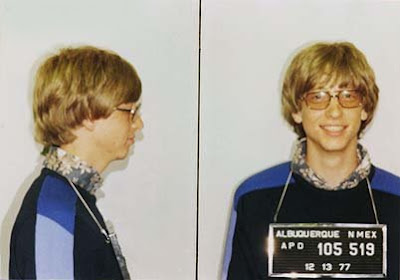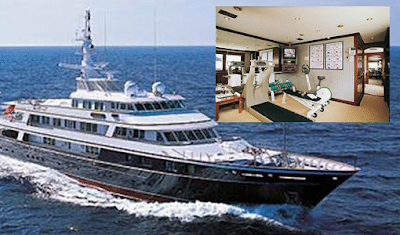Friday, February 19, 2010
Love: Online Dating
Heidi Funai sat perched at the swank bar at Circa in San Francisco’s Marina district, the city’s mecca for straight singles. As men sidled up, she noted which ones might be there to mingle and which wore wedding bands.
“The real world is a lot of work,” said Funai, an attractive 30-something with shoulder-length, wavy blond hair freed from her Vespa helmet.
She had scootered into the real world to talk about the virtual realm of online dating. Ms. Funai once found love online, and now that she is back to search again, she has noticed a disheartening trend: it is getting increasingly cruel out there in cyberdating.
“The social contract is broken with online dating” in a way that does not exist in real life, Funai said. She has used online dating sites for nearly a decade — and she does not like what she sees happening.
Since the current recession began, the popularity of online dating has surged — memberships are up and new matchmaking portals have emerged to take advantage of the demand — industry growth of up to 30 percent is expected in the next year or two, according to the tracking site DatingService.com.
This has also led to an increase in behavior that would earn a slap in person, but has become de rigueur on the Internet.
Never-answered messages, explicit requests for sex, fake bios, outdated photos and insults are ubiquitous. Funai said men in their 50s had contacted her, completely unsolicited, just to say she was too old. “They wouldn’t do that in person,” she said, “but online ...” 4-Day Money Making Blueprint Video Series.
It is love in the time of ones and zeros, the rudimentary language of computers. In the digital age, everything must at some point be reduced to this basic construct of choice: One or zero. Yes or no. On or off. Subscribers to online dating sites are forced to come up with a list of their desires. Red hair? Yes or no. Over 30 O.K.? Please check a box.
The result is that millions are now trained to be dismissive based on detailed and sometimes arbitrary criteria. Combine this growth in fantasy checklists with the anonymity of the Web, and it gets ugly.
Laurie Davis, an online dating analyst at eFlirtexpert.com has observed the problem — with men. “They forget about the chivalry factor sometimes when they date online,” Davis said.
Who comes up with these measures? In most cases, it is the Web site’s owners. At OkCupid.com, however, it is left up to members to suggest dating criteria, and the result is an astonishing example of the need by some to quantify the ideal mate.
Sam Yagan, OkCupid.com’s co-founder and a Stanford M.B.A. alumnus, said the site started with this premise: Can you use math and data analytics to match people up? With the goal of creating a screening process that was “more human than a checkbox.”
Yagan said, the site takes thoughts from its 4.2 million monthly users to build the questions. Users answer as many as they like — the average is 233.
With such a high number of expectations, no wonder some become disgruntled.
And that might explain what is happening in the gay community and its rapid embrace of the iPhone application Grindr. When activated, a grid of dozens of tiny succinct profiles fills the phone screen, using GPS technology to tell users how far away they are from each another.
“17 feet away,” the message said one evening when fired up at a cafe in the Castro district — a disproportionate number of men were then seen holding their phones and looking over their shoulders. Less than a year old and limited to gay men, Grindr already has 500,000 users.
“We keep it PG-13,” said Joel Simkhai, the company’s founder. Although some use the application to facilitate casual hook-ups, no lewd language or photos are allowed.
There is also the reality that users stand a good chance of actually seeing each other in person, not hiding anonymously behind a keyboard, enforcing accountability for one’s conduct.
“It’s more consistent with real life,” Simkhai said, “a little less in your face.”
A version for heterosexuals is in the works.
Save My Marriage Today!
But even this emerging slice of the online dating world is not immune from random acts of malice. Almost as soon as Grindr was created, a rogue Web site started called Guys I Blocked On Grindr, dedicated to publicly burning men considered undesirable.
Perhaps there is no way to separate the more public forms of love and the more public forms of cruelty.Still, Funai will continue to try to navigate the minefield of online dating.(NYT)
The Woman Men Adore...and Never Want To Leave.
Philippines Light Rail Transit Public Transportation
The Manila Light Rail Transit System (Filipino: Sistema ng Magaan na Riles Panlulan ng Maynila),[citation needed] popularly known as the LRT, is a metropolitan rail system serving the Metro Manila area in the Philippines. Its twenty-nine stations over 28.8 kilometers (17.9 mi) of mostly elevated track form two lines. LRT Line 1, also called the Yellow Line, opened in 1984 and travels a north–south route. LRT Line 2, the Purple Line, was completed in 2004 and runs east–west.
The LRT is operated by the Light Rail Transit Authority (LRTA), a government-owned and controlled corporation under the authority of the Department of Transportation and Communications (DOTC). Along with the Manila Metro Rail Transit System (MRT, also called the Blue Line), and the Philippine National Railways (PNR), the LRT is part of Metro Manila's rail transportation infrastructure known as the Strong Republic Transit System (SRTS)
Stations
 The People Power Revolution was a series of nonviolent and prayerful mass street demonstrations in the Philippines that occurred in 1986. It was the inspiration for subsequent non-violent demonstrations around the world including those that ended the communist dictatorships of Eastern Europe.
The People Power Revolution was a series of nonviolent and prayerful mass street demonstrations in the Philippines that occurred in 1986. It was the inspiration for subsequent non-violent demonstrations around the world including those that ended the communist dictatorships of Eastern Europe.

 In 1990, it was voted by the BMW Tropical Beach Handbook as one of the best beaches in the world
In 1990, it was voted by the BMW Tropical Beach Handbook as one of the best beaches in the world
 Barasoain Church (also known as Our Lady of Mt. Carmel Parish) is a Roman Catholic church built in 1630 in Malolos City, Bulacan.
Barasoain Church (also known as Our Lady of Mt. Carmel Parish) is a Roman Catholic church built in 1630 in Malolos City, Bulacan.
 Laguna de Bay (Filipino: Lawa ng Bay; English: Laguna de Bay is the largest lake in the Philippines and the third largest freshwater lake in Southeast Asia
Laguna de Bay (Filipino: Lawa ng Bay; English: Laguna de Bay is the largest lake in the Philippines and the third largest freshwater lake in Southeast Asia
 Malacañan Palace, is the official residence of the President of the Philippines.
Malacañan Palace, is the official residence of the President of the Philippines.






















 >
>




















































No comments:
Post a Comment